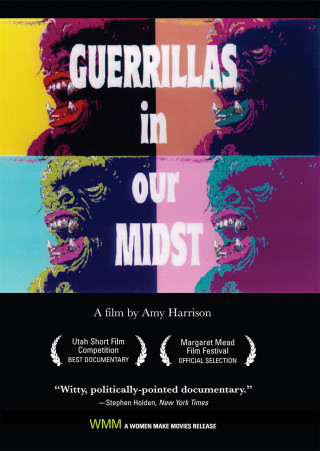
SYNOPSIS
PRESS
"Stylish, fun and outrageous...a terrific exposé of the sleazy procurement, trading, distribution, and selling of works of art in Manhattan as seen through the eyes of hip, angry women artists."
"Witty, politically-pointed documentary."
"Biting social satire."
SCREENING HIGHLIGHTS AND AWARDS
- Utah Short Film Competition, Best Documentary
- Melbourne Film Festival
- Margaret Mead Film Festival
- Montreal Festival du Nouveau Cinema
- National Educational Film and Video Festival
ABOUT FILMMAKER(S)
Amy Harrison is a San Francisco-based artist who has more than ten years experience making award-winning short films and videos on personal and political subjects. Her first film was a documentary on an art activist group called the Guerrilla Girls, and she has gone on to win many grants and awards, including a National Endowment for the Arts Fellowship and a grant from the UC Institute for Research in the Arts. Her current video work explores the intersection of autobiography and landscape, and is the result of her musings on "deep time" and the nuclear legacy of the Cold War. (8/14)

